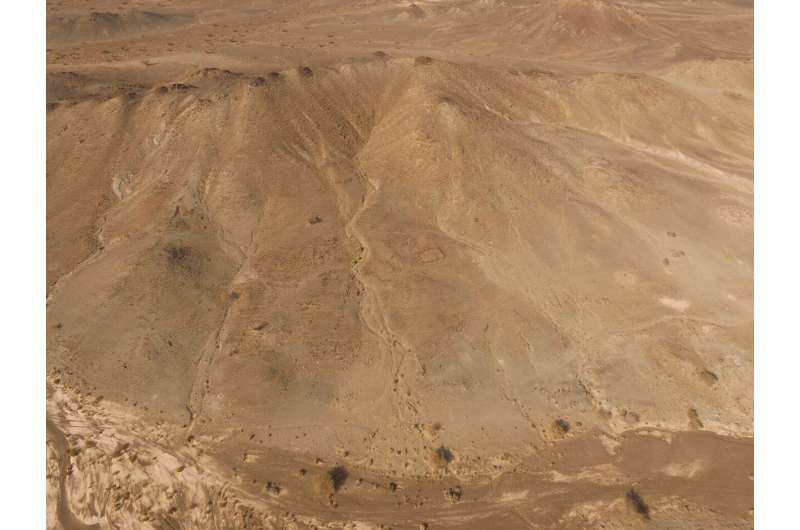This article has been reviewed according to Science X's editorial process and policies. Editors have highlighted the following attributes while ensuring the content's credibility:
fact-checked
trusted source
proofread
Archaeologists discover 4,300-year-old copper ingots in Oman

A tip from the local population had led the archaeologists from Frankfurt to the area near the city of Ibra in Oman, where they found several settlements. Irini Biezeveld and her fellow doctoral researcher Jonas Kluge were staying in the country in the east of the Arabian Peninsula for six weeks of field research under supervision of the Ministry of Heritage and Tourism of Oman in the North Sharqiyah Governorate.
They documented the buildings visible to them, then dug test pits in the ground. Their aim was to date the settlements by means of any charcoal finds they might discover there. That was when something green appeared: a lump of copper, corroded on the outside, consisting of three individual ingots in the shape of a round cone.
"A find like this is extremely rare," says private lecturer Dr. Stephanie Döpper, the academic supervisor of the two doctoral candidates. The residents presumably left the find, which weighs 1.7 kilograms, behind by mistake when they abandoned the settlement—for whatever reason that was.
The settlement identified by Biezeveld and Kluge dates from the Early Bronze Age (about 2600-2000 BC). During this period, the territory of present-day Oman was one of the most important producers of copper for ancient Mesopotamia in modern-day Iraq, as well as the Indus culture in what are now Pakistan and India. It was only here that copper ore occurred on a larger scale.
Cast into copper ingots, it was a coveted commodity, as documented not least by cuneiform texts from Mesopotamia. Since copper ingots were usually further processed to make tools and other objects, they are only rarely unearthed in archaeological excavations. All the more surprising was the discovery of several such ingots in the Early Bronze Age settlement.
The copper ingots have a plano-convex shape typical for the period, which was formed by pouring the molten copper into small clay crucibles. Through the discovery of the copper ingots, it is possible to learn more about the role of Oman in interregional trade relations during the Early Bronze Age, as well as about the metal processing technologies already known at that time.
Smelting copper requires a lot of combustible material, which was likely to have been a major challenge in a region as arid and low in vegetation as Oman. How people in the Early Bronze Age handled their limited resources and whether it was possible for them to use these sustainably are questions to be answered in the further course of the project.
Several pottery sherds of 'black-slipped jars', large storage vessels of the Indus culture that were also discovered there, also corroborate that the newly discovered village was in close exchange and contact with the Indian subcontinent. It seems that even a small, rather rural settlement in Central Oman was part of a system of interregional trade and exchange of goods.
Provided by Goethe University Frankfurt am Main





















